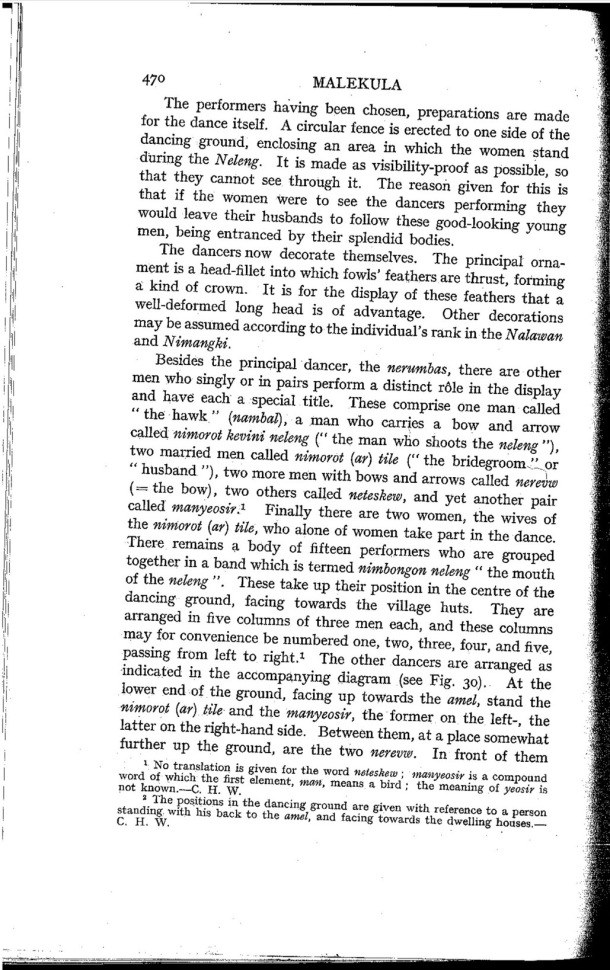|
|  [Note: this transcription was produced by an automatic OCR engine]
q =
470 MALEKULA
The performers having been chosen, preparations are made
for the dance itself. A circular fence is erected to one side of the
dancing ground, enclosing an area in which the women stand
during the Nelmg. It is made as visibility-proof as possible, so
that they cannot see through it. The REASON given for this is
that if the women were to see the dancers performing they
would leave their husbands to follow these good-looking young
men, being entranced by their splendid bodies.
The dancers now decorate themselves. The principal orna-
ment is a headȕllet into which fowls' feathers are thrust, forming
a kind of crown. It is for the display of these feathers that a
well-deformed long head is of advantage. Other decorations
may be assumed according to the individual’s rank in the Nalauum
and Nimangki.
Besides the principal dancer, the mmmbas, there are other
men who singly or in pairs perform a distinct role in the display
and have each a special title. These comprise one man called
“ the hawk â€ù (mzmbal), a man who carries a bow and arrow
called nimorot kevini neleng (“ the man who shoots the neleng "),
two married men called nimorat (aw) tile (" the bridegroomli or
“ husband "), two more men with bows and arrows called nereï¬Åw
(= the how), two others called mteskew, and yet another pair
called manyeosinl Finally there are two women, the wives of
the nimarat (ar) tile, who alone of women take part in the dance.
There remains a body of ï¬Åfteen performers who are grouped
together in a band which is termed nimbangon neleng “ the mouth
of the neleng ". These take up their position in the centre of the
dancing ground, facing towards the village huts. They are
arranged in ï¬Åve columns of three men each, and these columns
may for convenience be numbered one, two, three, four, and ï¬Åve,
passing from left to right} The other dancers are arranged as
-indicated in the accompanying diagram (see Fig. 30). At the
lower end of the ground, facing up towards the amel, stand the
mmorol (aw) tile and the manysosir, the former on the left-, the
latter on the right-hand side. Between them, at a place somewhat
further up the ground, are the two nemzw. In front of them
1 No translation is given for the word nneskew ; 1nan;/easiv is a compound
word of which the ï¬Årst element, man, means a bird ; the meaning oi ymsir is
not known.~C. H. W.
1 The positions in the dancing ground are given with reference to a person
standing with his back to the llmal, and facing towards the dwelling houses.-
C H. W. ‘
|